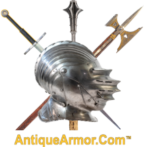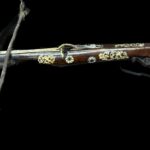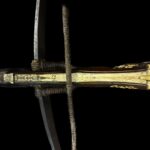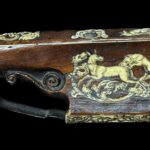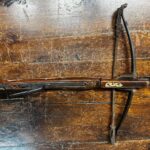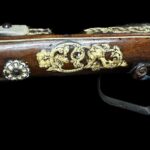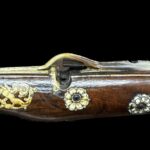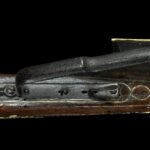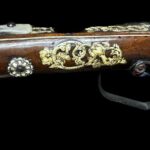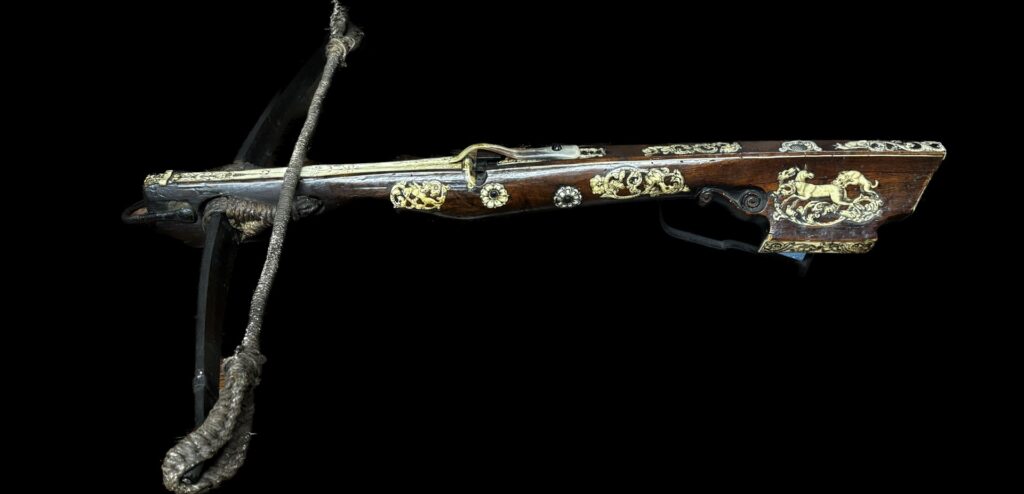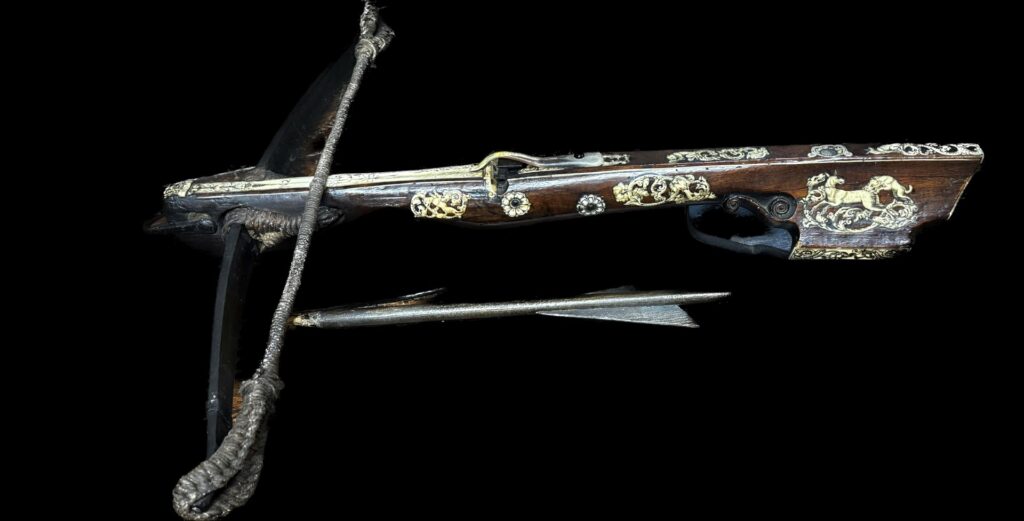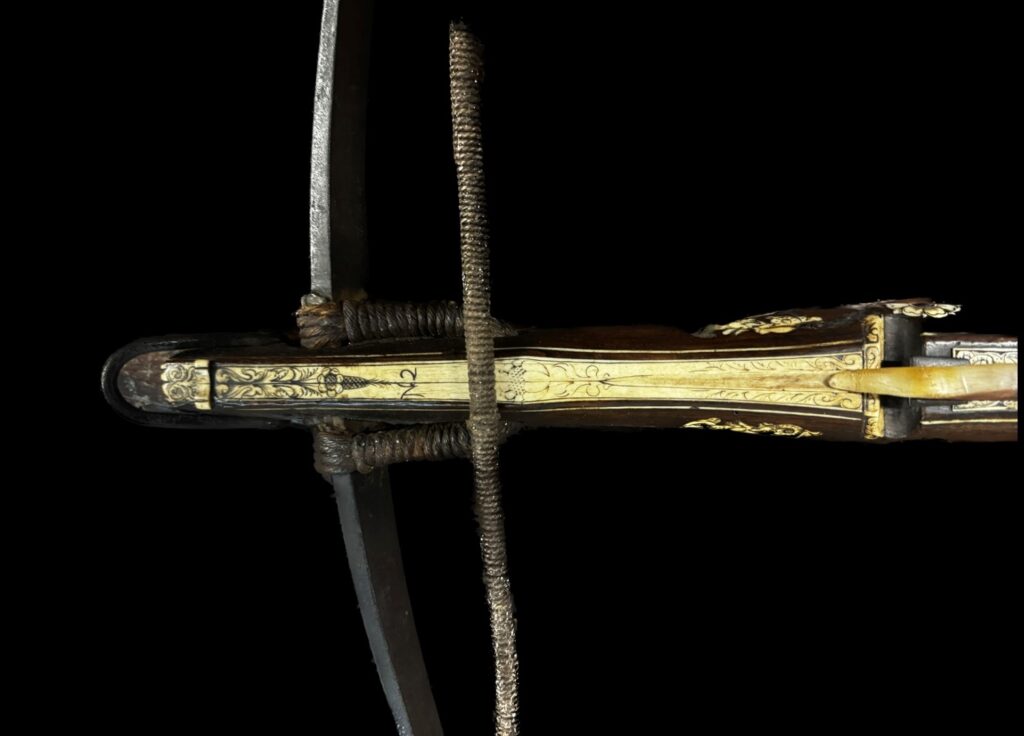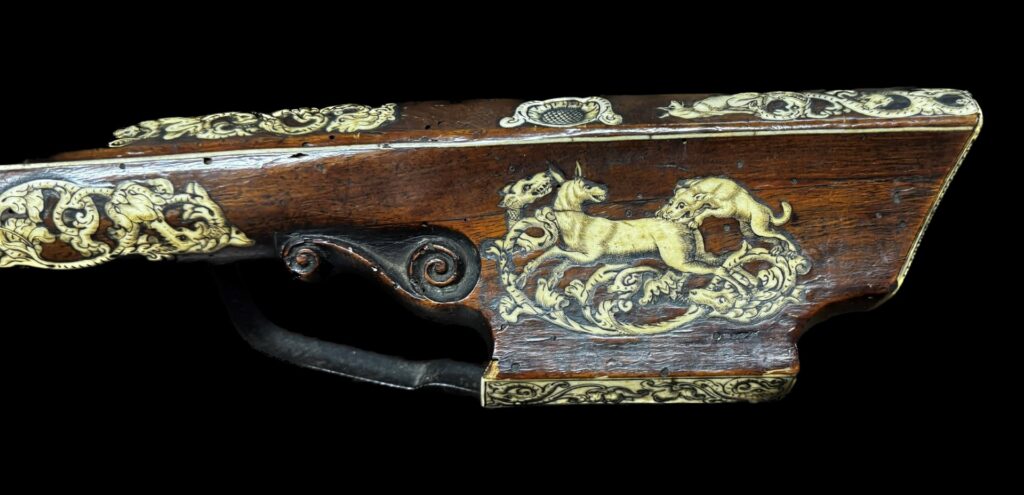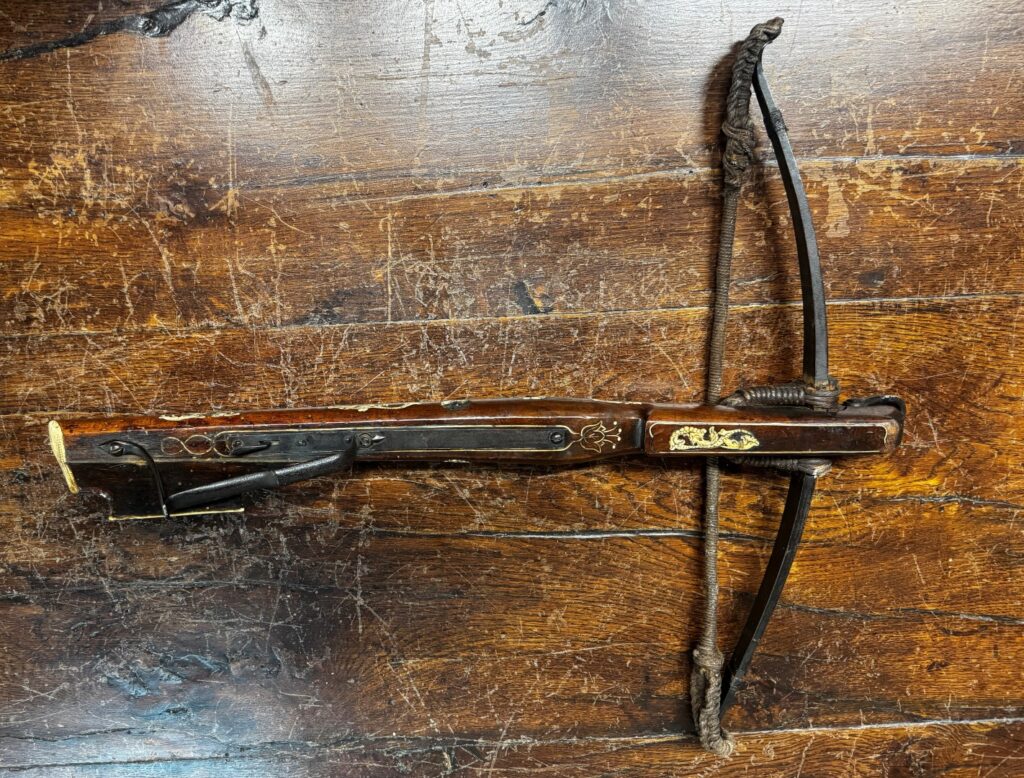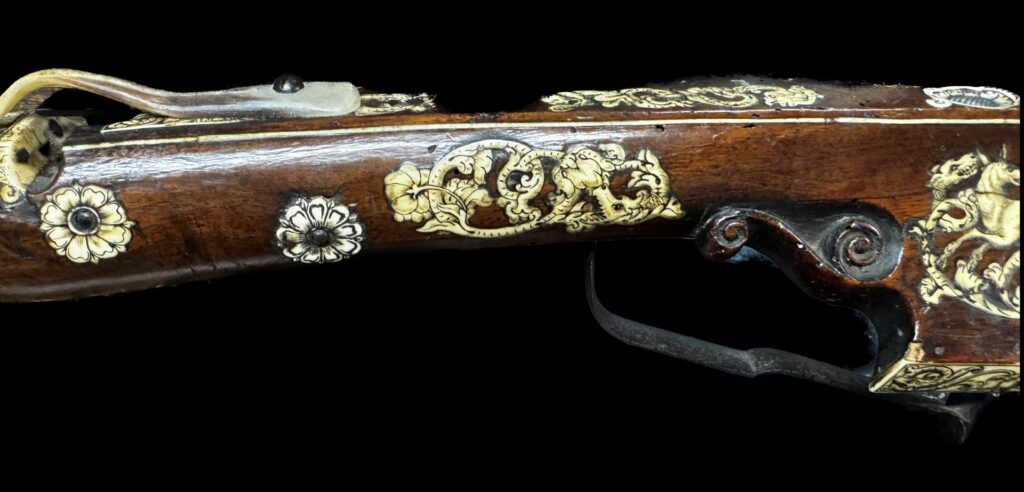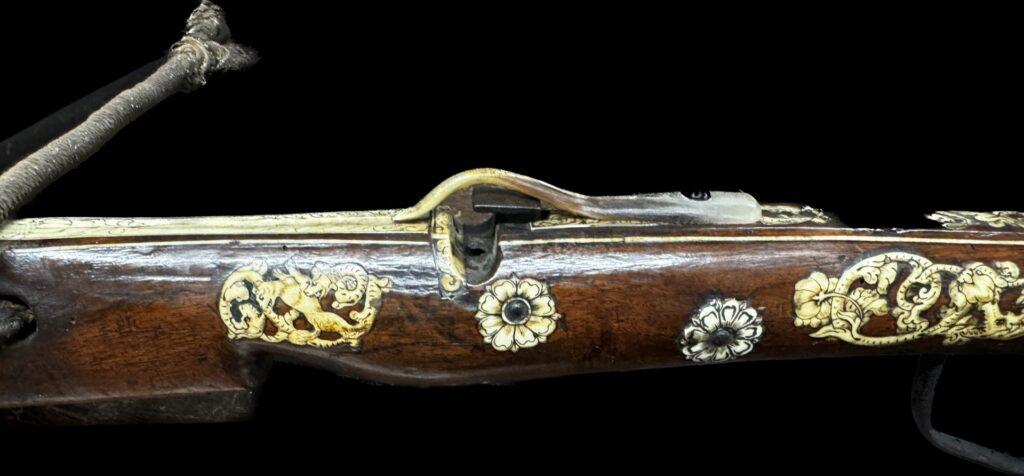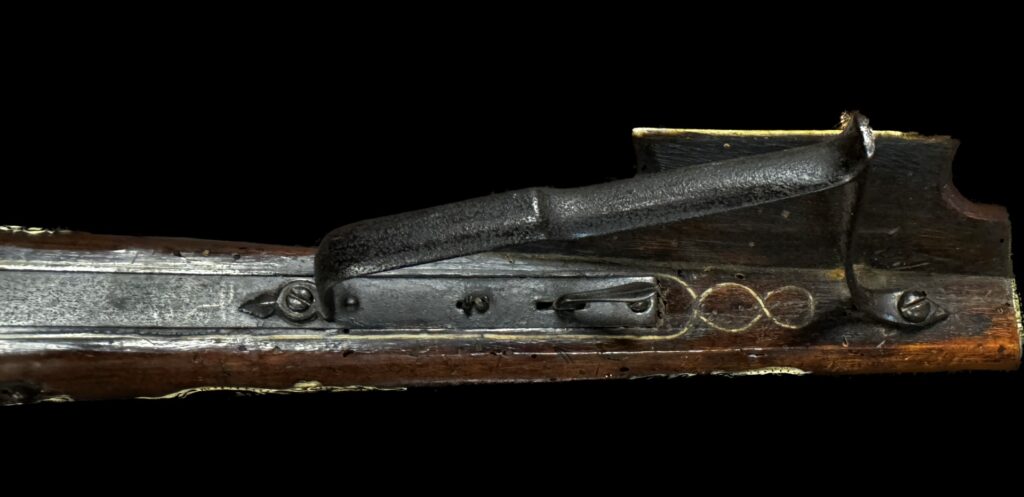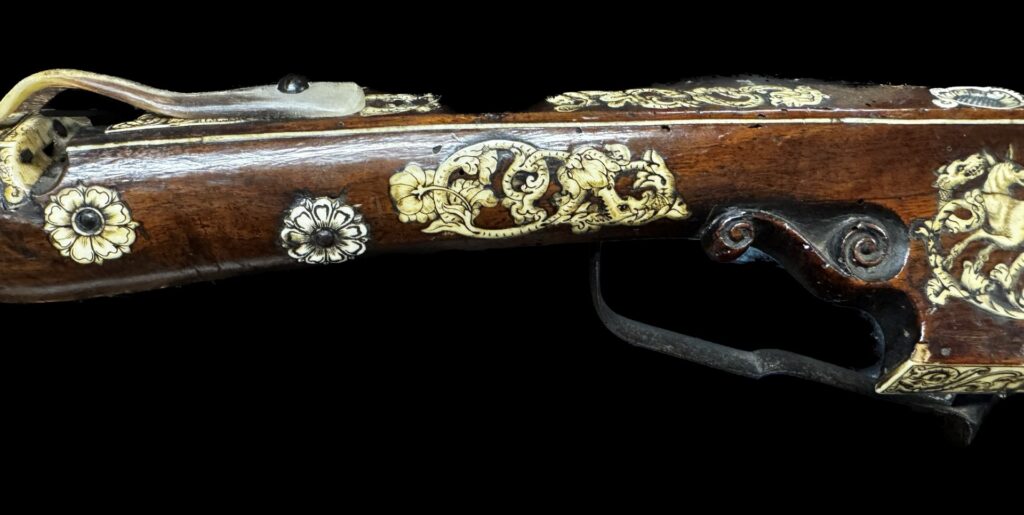1742) MUSEUM QUALITY HIGHLY DECORATED CROSSBOW CIRCA 1700s: Veneered with bovine bone and chiseling. Decorated with dragons, unicorns, dogs, sea monsters, and floral patterns. Superb condition.
Discussion: Crossbows presented a significant problem to the armored knight. A well-placed bolt shot by the most inexperienced crossbowman could penetrate armor. A lifetime of knightly training with the most expensive implements of war could be trumped by a peasant with a newly acquired crossbow in a few seconds. The crossbow‚ effectiveness did not go unnoticed. In 1139, the Second Lateran Council under Pope Innocent II (d.1143) issued a canon (decree) that stated that the Church had outlawed the use of the crossbow and longbow among Christians. It could only be used against non-Christians. The crossbow‚ silent discharge and many of the advantages mentioned above made the crossbow better for hunting than a firearm. The silence permitted hunting without scaring away animals, and the lack of a smell from flashing gunpowder meant the hunter‚ position was not given away. Crossbows for the hunt were much more elaborate and expensive, such as this one under discussion. Only the wealthy typically went on a hunt. Just as topics and negotiations are discussed on the golf course today, the hunt in the Medieval and Renaissance periods played the same role. It was also a time to show off ‚ wealth and socialize among the rich. The wealthy hunted bear, boar, and deer in what was referred to as the ‚ high hunt. Lesser animals, such as birds and rabbits, were hunted by the poor. The hunt for the wealthy and noble was an elaborate affair planned with military precision and included many servants. Among the multitude of servants were beaters who made noise using implements to scare animals toward the hunters. The hunters would be camouflaged in natural terrain, camouflaged carts, artificial hedges, atop trees, or any combination as the animals were driven to them. Hunting was also done on horseback.
Description: Constructed with a strongly formed tiller of oak wood with a heavy steel bow retained by cords ( probably originals). It is veneered with bovine bone and decorated with dragons, unicorns, dogs, sea monsters, and floral patterns. It is fitted with an iron trigger and an original bolt clip. A highly decorated thumb rest is veneered in a cross pattern and framed in bovine. It is decorated with an N2 on the bovine inlay on the chase. This is indicative of a small number of privately commissioned crossbows from a wealthy patron or noble for the hunt.
Comes with a crossbow bolt.
Approximate length: 25.70 inches.
Provenance: From a French collection.
Contact Me To Get The Latest Lowest Price Possible From The Owner*
